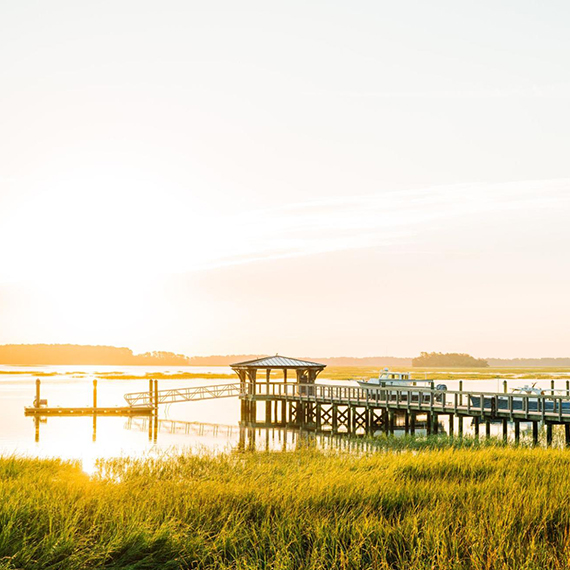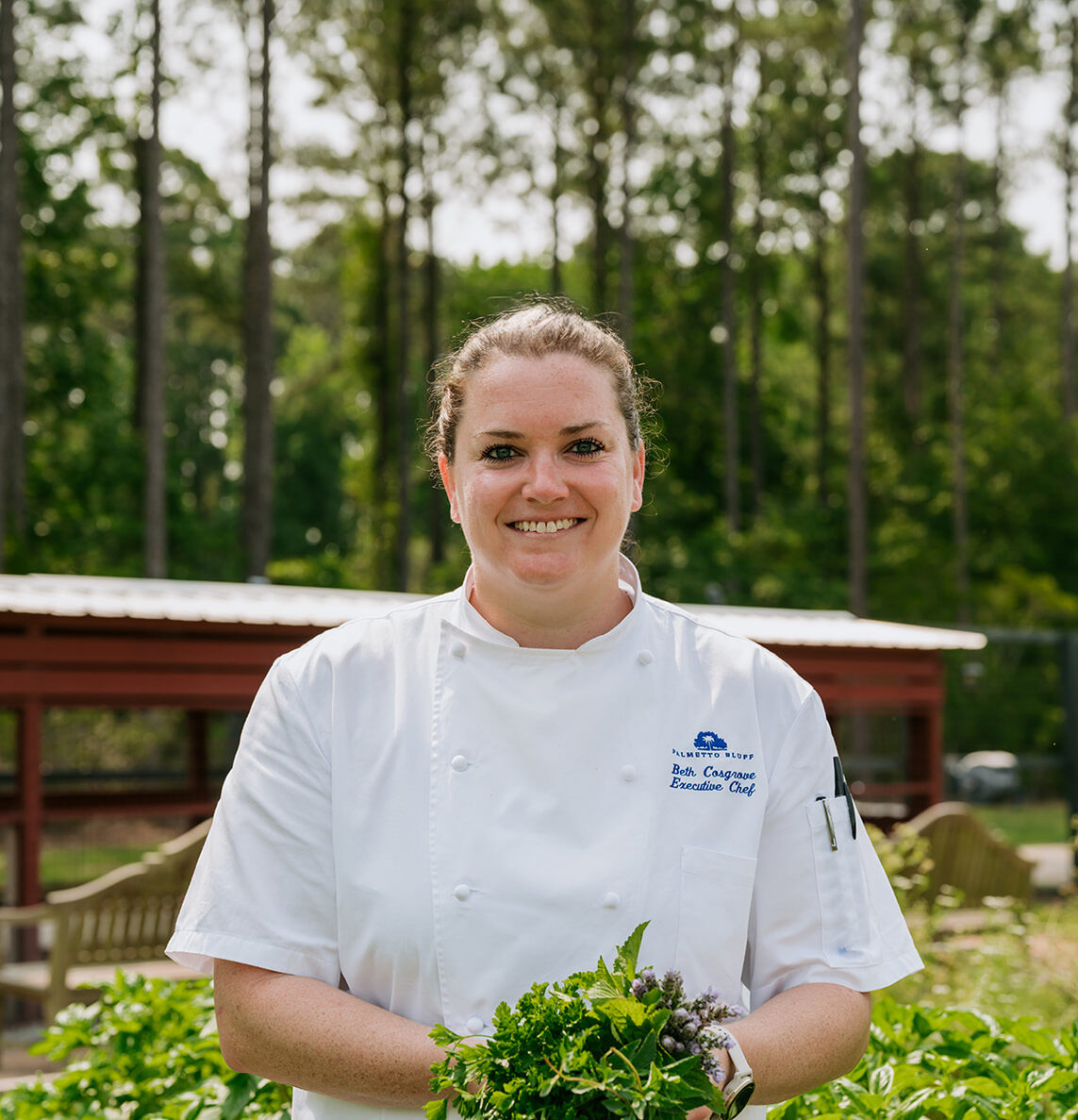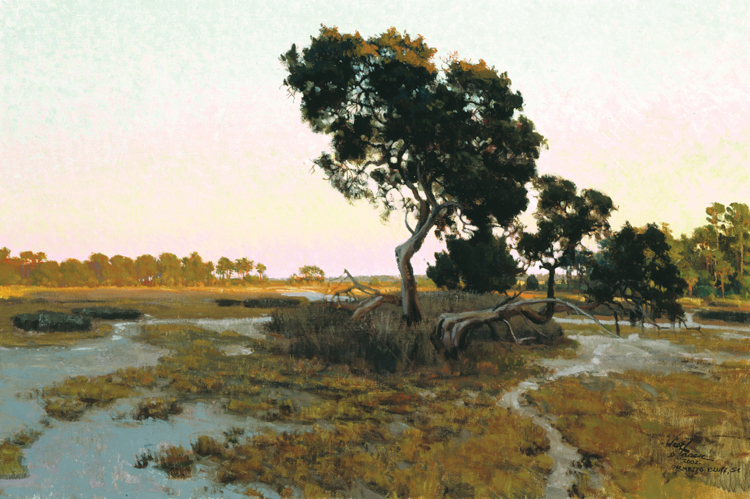Palmetto Bluff Real Estate Company Sales Office
Office Hours
Monday-Friday 9am - 5pm
Saturday 9am - 4pm
Sunday 12 - 4pm
Saturday 9am - 4pm
Sunday 12 - 4pm
Palmetto Bluff
A history of eating well
Southern food, perhaps more than any other regional cuisine in America, has long been recognized for its diversity and history and for the stew pot of cultural influences which that history has brought to it. Its primary influence has undoubtedly been African. From the early Colonial period, beginning with the rum and sugarcane plantations of the West Indies and the Creole French and Spanish inhabitants of the Deep South, food was interpreted through African hands.
They harvested the fields, cleaned the game, ground the spices, and cooked the meals. They brought with them staples such as peanuts and okra and immediately adapted to the Native American’s predilection to corn.
Thus, a tradition of food selection and preparation evolved that has withstood 400 years of cultural assault. Moreover, though it has clung tenaciously to the underpinnings of its heritage, Southern food has adapted gracefully to new and creative interpretations of its time-tested methods and ingredients.
A quick review of the history of Palmetto Bluff shows that people have eaten well here for a very long time. The earliest Native Americans, the Altamaha and Yemassee, found sustenance in the remarkable bounty of fish and game. Their shell middens on the high bluffs are a testament to the first oyster roasts—a social and culinary tradition still carried on with great relish here today.

The golden glow of the marshes, the crisp air, and the sense of calm after a busy summer season all make this time of year unforgettable. Whether you’re enjoying the Bluff or exploring the wider coastal region, here are five reasons why fall is when the Lowcou...

David’s Journey to Palmetto Bluff Born and raised in Lewisburg, West Virginia, David Johnson’s career path began with a moment of chance. While studying Finance and Economics at Marshall University, he walked into the Greenbrier Sporting Club’s real estate of...

Palmetto Bluff Club: Finding Your Perfect Fit Tucked into the heart of the Lowcountry, Palmetto Bluff is a place where life unfolds at its finest pace—unhurried, connected, and deeply rooted in community. Membership here goes beyond access to world-class amen...

4 Ways to Incorporate Coastal Fall Decor into Your Home in 2025If you are planning to decorate your home for fall, you might feel limited to warm colors and chilly weather. But if you live on the coast, you can easily incorporate coastal fall décor into your h...

Here in the Lowcountry, the Conservancy brings FeederWatch to life with guided sessions at the Conservancy’s bird feeders. Education and Outreach Manager Aaron Palmieri leads these gatherings, teaching attendees how to identify wintering species, choose the ri...

Chef Beth Cosgrove shares her favorite game day dip—with a Southern twist. Ingredients 2 cups cooked sea island red peas, crushed with a fork 1 recipe of pimento cheese dip (recipe below), room temperature 2 cups crème fraiche 1 cup fire-roast...

At Palmetto Bluff, newly built homes are more than residences—they are carefully crafted retreats offering the best of Lowcountry living. Palmetto Bluff Real Estate Co. Agent, Amanda Cutrer, shares the benefits of buying “new” in the Bluff. Builder Support ...

Visionary land planner Mark Permar reflects on Palmetto Bluff's rich history and its enduring connection to the land. With Anson on the horizon, the legacy of designing with nature lives on.How did you first get involved with Palmetto Bluff? I believe it was ...

Explore Available Listings with Room For the Whole Family At Palmetto Bluff, life moves at the pace of the tides; slow enough to savor, yet rich with moments worth sharing. And when it comes to welcoming the people you love most, the right home makes all the ...

Real Estate in Bluffton, SC: Trends, Updates, and Insights The first half of 2025 has been nothing short of remarkable for Palmetto Bluff Real Estate Company, with sales volume, transaction count, and market share setting a strong pace for the year ahead. As ...
Learn about the Palmetto Bluff Conservancy and how we keep the vision of our land in place.
On land or water, there is an ever-evolving variety of activities.
We do not attempt to independently verify the currency, completeness, accuracy or authenticity of the data contained herein. All area measurements and calculations are approximate and should be independently verified. Data may be subject to transcription and transmission errors. Accordingly, the data is provided on an “as is” “as available” basis only and may not reflect all real estate activity in the market”. © [2023] REsides, Inc. All rights reserved. Certain information contained herein is derived from information, which is the licensed property of, and copyrighted by, REsides, Inc.